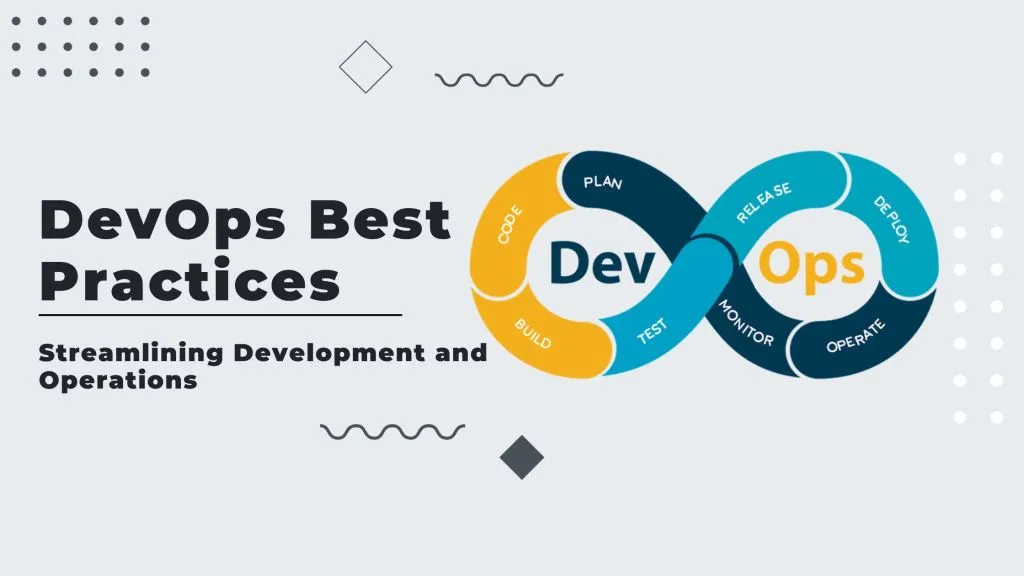10 DevOps Best Practices

DevOps Best Practices
In the ever-evolving world of software engineering, DevOps has become a critical practice that bridges the gap between development and operations. It emphasizes collaboration, automation, and continuous improvement, enabling organizations to release high-quality software faster and more reliably.
In this post, we’ll take a deep dive into the most impactful DevOps best practices, exploring not only what they are but also why they matter and how you can implement them effectively.
1. 🔁 Establish Robust CI/CD Pipelines
What it is:
Continuous Integration (CI) is the practice of merging code changes frequently into a shared repository, followed by automated builds and testing.
Continuous Deployment (CD) extends CI by automatically deploying code to production after passing all tests.
Why it matters:
Without CI/CD, teams are often bogged down by manual processes, integration conflicts, and late-stage bugs. CI/CD ensures rapid feedback, accelerates delivery cycles, and reduces human errors.
How to implement:
- Use tools like Jenkins, GitHub Actions, GitLab CI/CD, or CircleCI.
- Ensure automated testing at every stage (unit, integration, UI).
- Implement approval gates for critical stages (e.g., staging to production).
- Use feature flags to control releases.
2. 🛠️ Adopt Infrastructure as Code (IaC)
What it is:
IaC is the practice of managing and provisioning infrastructure through code rather than manual processes.
Why it matters:
Manual configuration leads to inconsistencies, environment drift, and operational risk. IaC promotes repeatability, transparency, and scalability.
How to implement:
Use Terraform, AWS CloudFormation, or Pulumi.
Version control infrastructure in Git repositories.
Use modules to enforce reusability and standards.
Implement CI/CD for infrastructure deployments to ensure safe, auditable changes.
3. 📦 Use Containers and Orchestration
What it is:
Containers package an application and its dependencies together, making it portable and environment-agnostic. Orchestration platforms like Kubernetes manage container lifecycles.
Why it matters:
Containerization simplifies deployment across dev, staging, and production environments. Orchestration adds resilience, scalability, and service discovery.
How to implement:
Use Docker for containerizing applications.
Use Kubernetes, Amazon ECS, or Nomad for orchestration.
Define health checks, resource limits, and autoscaling policies.
Deploy using Helm charts or Kustomize for Kubernetes.
4. 🔐 Integrate Security Early (DevSecOps)
What it is:
DevSecOps embeds security checks and best practices into the DevOps workflow from the start.
Why it matters:
Traditional security models can slow down delivery and only catch issues late. DevSecOps ensures vulnerabilities are identified and resolved early, reducing risk and cost.
How to implement:
Use SAST tools like SonarQube, Checkmarx.
Use DAST tools like OWASP ZAP.
Use container vulnerability scanners like Trivy or Aqua.
Store secrets securely using HashiCorp Vault, AWS Secrets Manager, or SOPS.
5. 📊 Implement Comprehensive Monitoring and Logging
What it is:
Monitoring tracks the health and performance of applications and infrastructure. Logging captures detailed events that aid in debugging and auditing.
Why it matters:
Observability is crucial for understanding system behavior, detecting issues early, and reducing MTTR (mean time to recovery).
How to implement:
Use Prometheus + Grafana for metrics and dashboards.
Use ELK Stack (Elasticsearch, Logstash, Kibana) or Fluentd + Loki for logs.
Use alerting rules for anomalies, high error rates, or resource exhaustion.
Integrate monitoring into Slack, email, or PagerDuty for real-time alerts.
6. 🧪 Automate Testing at All Levels
What it is:
Automated testing includes unit tests, integration tests, system tests, and acceptance tests—all triggered during CI/CD.
Why it matters:
Manual testing doesn’t scale and is prone to oversight. Automated testing ensures new changes don’t break existing functionality.
How to implement:
Follow test-driven development (TDD) where appropriate.
Use JUnit, Mocha, PyTest, or Cypress based on your stack.
Run tests in parallel to reduce execution time.
Include test coverage reports in your pipeline results.
7. 🔄 Immutable Infrastructure & Declarative Deployments
What it is:
With immutable infrastructure, systems are replaced rather than updated in place. Declarative deployments define the desired state and let tools manage the rest.
Why it matters:
This reduces configuration drift, simplifies rollback, and ensures environment consistency.
How to implement:
Use Docker images or immutable AMIs.
Deploy using tools like ArgoCD, FluxCD, or Spinnaker.
Keep all deployment configurations in Git (GitOps).
8. 👥 Encourage Collaboration and Ownership
What it is:
DevOps is not just about tools—it’s about people and culture. Cross-functional teams working together toward shared goals is core to DevOps.
Why it matters:
Shared responsibility leads to faster problem resolution, better innovation, and increased trust.
How to implement:
Conduct regular blameless postmortems after incidents.
Use shared dashboards and communication tools (e.g., Slack, Teams).
Promote agile ceremonies like daily standups, sprint reviews, and retrospectives.
Break down silos between Dev, QA, Ops, and Security.
9. 💰 Optimize Cloud Costs and Performance
What it is:
Cloud-native environments can scale dynamically, but without cost awareness, they can become expensive and inefficient.
Why it matters:
Efficient resource use saves money and ensures optimal performance.
How to implement:
Use autoscaling for services based on CPU/memory usage.
Set budgets and alerts using AWS Budgets or GCP Cost Monitoring.
Leverage spot instances or serverless functions where applicable.
Regularly review infrastructure usage and terminate unused resources.
10. 📚 Continuously Learn and Improve
What it is:
DevOps is an iterative journey. Continuous learning enables adaptation to new technologies, processes, and challenges.
Why it matters:
Teams that learn from failures and successes become more resilient, innovative, and agile.
How to implement:
Conduct retrospectives after every major release.
Invest in training and certification programs (e.g., Kubernetes, AWS, Terraform).
Stay current by following DevOps communities, newsletters, and conferences.
Encourage experimentation and innovation with time-boxed spikes or POCs.
Conclusion
DevOps isn’t a tool or a set of scripts, it’s a culture and methodology. By implementing these best practices, your team can build more reliable systems, respond to changes faster, and deliver better value to users.
Start small, iterate, and continuously improve. That’s the DevOps way